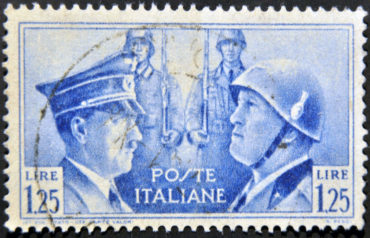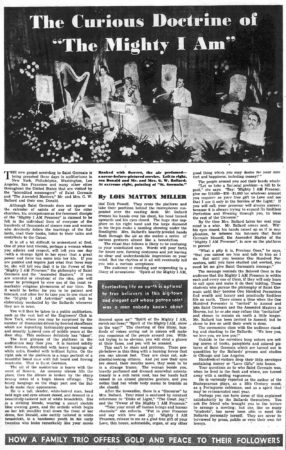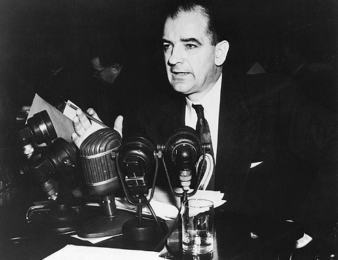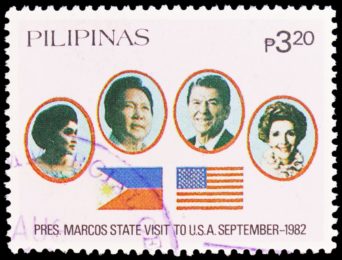Reality | Real Estate WordPress Theme Feb 22/2021
Rated 4.33 out of 5 based on 3 customer ratings
(3 customer reviews)
- Security Status
- Upload By Maxkinon
₹166.73
- Free support
- Unlimited domain use
- Lowest price guarantee
- Quality checked by team
Additional options
- Reskin and Installation Service
Have your App reskinned and installation to meet your needs.
- Short Description
Reality is a fresh and clean, modern and functional, versatile and … Reality | Real Estate WordPress Theme Version.
- Web Development Service
We offer mobile-friendly, fast-loading and modern-looking website.
Help and Support
Our support team is available from (Mon-Fri) 11:00 AM to 5:00 PM. (GMT+5:30).
You can contact them through the contact box. You can create support ticket for better support.
Edit Content
“We are choked with news but starved of history.”—Will Durant
The seeds of the January 6, 2021, insurrection can be traced back to the early 1900s, when industrialists concerned with the erosion of their wealth and power attempted to control the currency and restrict government spending. Later these forces, in alignment with America Firsters, aggrieved veterans, and antisemitic splinter groups that mirrored various features of European fascism, including white supremacists, rallied to oppose Roosevelt and the New Deal.
These same elites, their derivatives, and a revolving cast of con artists, energy and tech entrepreneurs, and political extremists would repeatedly convene over the following one hundred years in a concerted attempt to undermine the authority of the U.S. government and oppose social democracy and the democratization of American life.
Roosevelt’s presidency began tumultuously and with a series of shocks that took even his supporters by surprise. Just 36 hours after taking office, at 1 a.m. on Monday, March 6, 1933, Roosevelt suspended all banking transactions, effective immediately. He issued an emergency proclamation that shut the country’s banks down for a full week, in part to prevent hoarding of gold and silver. 1 A month later, on April 5, 1933, he issued Executive Order 6102, which mandated that all gold be turned in to the federal government, outlawing private reserves. 2
These two actions shocked wealthy industrialists who had expected that Franklin Delano Roosevelt, of patrician background and “one of their own,” would address the challenges posed by the Great Depression in a way that would somehow coddle their interests. Their sense of betrayal was evident when Roosevelt sought to pay for his “New Deal” programs by taking the country off their sacred gold standard.
The gold standard, the practice of pegging the value of the dollar to a fixed amount of gold, had been the subject of political debate for decades. Advocates argued that it kept the government honest and constrained spending; a strict adherence to the gold standard kept politicians from pursuing expensive policies and wars simply by keeping them from spending money they didn’t have. 3 In 1933, dollars could be redeemed for gold at a price of $20.67 per ounce, 4 and the government was obligated to produce it upon demand. But there was not enough gold in reserve to redeem all dollars for gold, and that especially would not be the case after the Federal Reserve authorized the debt needed to finance the New Deal.
Wealthy industrialists believed the gold standard helped them keep the government under their control. Roosevelt’s abandonment of it directly attacked both their wealth and their power, and they felt they were being asked to pay for programs for the unlucky and unthrifty.
Right-wing veterans groups align with big business
Veterans of the Great War also felt betrayed. In 1932, having been promised benefits that would not be paid until 1945, and concerned about inflation (uncertain they would get paid in dollars that were worth anything), veterans organized a so-called “Bonus Army” demonstration in Washington, D.C., complete with tent encampments. Herbert Hoover eventually persuaded Gen. Douglas MacArthur to run them off, killing and injuring many participants in the process. Disgusted with Hoover’s disregard for their service, the powerful voting bloc, consisting of about one-sixth of the voting public, pledged their support to Roosevelt. 5
So their surprise was palpable when, on March 20, 1933, Roosevelt passed the Economy Act, which dramatically reduced their benefits in the name of trying to balance the federal budget. 6 Veterans groups were livid, particularly the Veterans of Foreign Wars, which came out against FDR’s actions and demanded restitution from Congress. 7
But Roosevelt settled on the New Deal and enacted it decisively and without delay. This “big bang” set into motion a spectrum of aligned anti-Roosevelt forces, coalescing around a few key groups and individuals.
The American Legion, a veterans organization, was founded in 1919 and funded in part by Grayson M.P. Murphy, a banker affiliated with J.P. Morgan. While the group was ostensibly designed to advocate for the interests of veterans, it also had a secondary role as a union-busting organization. 8 Members were reportedly issued baseball bats and encouraged to use them if they saw signs of union activity at their industrial workplaces. 9 The Legion, which, with a membership of about one million, dwarfed the much smaller, 150,000-member VFW, was more concerned with the interests of big business and had the conservative, moneyed leadership to match. 10
Maj. Gen. Smedley D. Butler, a celebrated war hero, attracted large audiences advocating for veteran bonuses at VFW events. 11 According to Butler, he was approached by Gerald MacGuire on behalf of Grayson M.P. Murphy, to speak in favor of a return to the gold standard at an American Legion convention in the fall of 1933. Butler, suspicious of the Legion’s ties to big business, declined the invitation and a substantial cash offer; incensed, he also claimed that industrialists connected to Murphy and MacGuire intended to enlist veterans in an effort to overthrow Roosevelt in the name of the restoration of the gold standard. 12
Murphy helped to seed another related organization, the American Liberty League, serving as its treasurer. 13 Made up of various wealthy industrialists, including members of the DuPont family, J. Howard Pew of Sun Oil, and several others, the League claimed to speak for the “common man” in its opposition to the New Deal. 14 The League, which today would be considered a kind of fake grassroots (or “astroturfing”) organization, was predicated on the idea that Roosevelt’s approach was far closer to the communism practiced in the Soviet Union and that a “third way” was needed instead. That “third way” resembled Italian fascism, as developed by Benito Mussolini—placing the interests of private capital first. And the League would borrow Mussolini’s idea of “class collaboration” (versus the “class struggle” of bolshevism) to enlist the support of both Legion veterans and regular citizens in its fight to preserve the gold standard. 15

Mail stamp printed in Italy showing Hitler and Mussolini face to face, circa 1941.
PHOTO CREDIT: neftali
In fact, Murphy sent his associate Gerald MacGuire on a fact-finding trip to Europe, to study developments in Italy, Germany, and France. 12 MacGuire apparently found much to admire in the fascist and Nazi regimes, but it was the French “Croix de Feu” (Cross of Fire) veterans’ organization that he felt was most applicable to the American situation. 16 MacGuire believed the Croix de Feu could serve as a blueprint for activating the American Legion’s most elite members in the battle against Roosevelt’s agenda. 17
Another related group, the National Association of Manufacturers, was formed in 1895 to provide support by industrial and oil interests for William McKinley’s presidential campaign. 18 McKinley, a staunch supporter of the gold standard, was running against William Jennings Bryan, who supported “bimetallism,” or the use of both silver and gold as a basis for currency. 19 This was seen by McKinley’s gold backers as inflationary and something that would threaten the net worth of the wealthiest Americans. 20
J. Howard Pew (also of the American Liberty League) and other NAM members felt their interests had been assaulted by Roosevelt because they had not properly “told their story” to the American people. 21 They launched a full-on P.R. offensive and influence campaign to favorably shape the public’s opinion of big business with the hopes it would also rub off on Congress.
This interlocking network—consisting of the American Legion, the Liberty League, and the National Association of Manufacturers—was ground zero for what would become an enduring foundation of opposition by big business leaders and the wealthy to the New Deal and its modern derivatives. The Liberty League tried mightily to unseat Roosevelt in 1936 but found its pitch for fascist class collaboration somewhat stillborn. People liked what the New Deal was doing for the country and were in no mood to move backward by adopting positions proposed by big business, which many perceived as reactionary and outmoded. 22
Popular anti-New Deal cult groups look to European fascism
Where the Liberty League failed in generating populist support, another group succeeded wildly. In 1932, Guy Ballard, a wallpaper hanger by trade, 23 and his wife, Edna, who had worked in an occult bookstore in Chicago, launched the “I AM Activity,” a cult religious group based on theosophical ideas borrowed from William Dudley Pelley’s fascist group the Silver Legion (or “Silver Shirts”), which also enjoyed popularity. 24
Rooted in themes popularized by the forged 1903 disinformational pamphlet “Protocols of the Learned Elders of Zion,” as well as white supremacy and antisemitism, these groups praised the Nazi and fascist regimes of Hitler and Mussolini. 25 Guy Ballard, who also wrote under the name Godfre Ray King, claimed that the “I AM” teachings were revealed to him by St. Germain, a quasi-historical character known to students of esoteric spiritual practices, at Mount Shasta, California. 26 He asserted that St. Germain had been reincarnated in the form of George Washington and that Ballard himself was a reincarnation of Washington. 27 Edna Ballard, also known as Lotus Ray King, was reported by some sources to be the reincarnation of Joan of Arc and Jesus Christ. 28 Guy was obsessed with gold, having embarked on several previous failed and fraudulent gold-mining ventures—one of which had led him to Mount Shasta. 29

During the 1930’s, the “I AM Activity” flourished in cities across America. Guy, Edna, and Donald Ballard traveled to packed auditoriums to reveal the teachings of ‘Ascended Masters’ and issue frenzied decrees against the Roosevelts.
CLICK IMAGE TO READ ARTICLE
The syncretic combination of the proto-patriotism of the Founding Fathers with the teachings of occult theosophical prosperity proved immensely popular. 30 By 1938, the group claimed it had as many as a million adherents. 31 Traveling from city to city, the Ballards and their son would hold “I AM” gatherings that drew thousands. 32 Crowds were brought to a frenzy by their various decrees, one of which ran: “Franklin and Eleanor Roosevelt. . . . Blast! Blast! Blast! Their carcasses from the earth forever!” 33 The group also aimed to overthrow the U.S. government, thus “saving” it from further subversion by Jews. 34 An “I AM” intelligence agent known as “K-17” was said to have hidden contacts throughout the U.S. government. 35
The Ballards moved to Los Angeles and launched a successful broadcast radio program that could be heard emanating from the storefronts in that city’s poorer neighborhoods. 36 What Murphy and the Liberty League had failed to seed in grassroots class collaboration, the “I AM” and “Silver Shirts” groups created on their own—each with its trademarked and bizarre form of antisemitism, anti-communism, and gnostic spiritual practice. 37
A man named Robert LeFevre collaborated with the Ballards in helping to popularize the “I AM” movement, serving as a leader in the group. 38 After Guy Ballard died in 1939, the organization faced growing challenges, and a year later, Edna Ballard, LeFevre, and several others were indicted by a federal grand jury on 18 counts of mail fraud in California. 39 Edna Ballard and her son were eventually convicted on January 31, 1942. But Robert LeFevre turned state’s witness and was acquitted. 40 The Supreme Court later acquitted the “I AM” defendants on appeal. 41
LeFevre, a former radio broadcaster with libertarian leanings, was fully convinced of the evils of Roosevelt’s progressivism and, prior to his involvement in the “I AM” cult, had enjoyed a career as an anti–New Deal propagandist. 42 Ironically, it was thanks to the New Deal’s biggest employment program, the Works Progress Administration, that LeFevre found a job working at radio station WHRM in Minneapolis. He joined the “I AM” cult to impress his station manager boss. 43
After a stint serving in special services during the war, LeFevre filed for bankruptcy while still managing to retain ownership of a low-rent hotel in San Francisco, which he parlayed through his “I AM” connections to gain control of Rudolph Valentino’s mansion, “Falcon’s Lair,” in Beverly Hills. 44 Newspapers ran headlines accusing the group of using the home as a base for a sex cult and holding séances that culminated in orgies. 45 LeFevre traveled the country during this time, delivering “Falcon Lair” talks about the dangers of a “shooting war with Russia” and the twin threats of socialism and a divided, confused America. 45
LeFevre, having ended the Falcon’s Lair misadventure “disillusioned,” 44 went on to collaborate with Joseph McCarthy and the FBI in rooting out Communists, including in a bizarre anti-Communist campaign against the Girl Scouts. In 1953, LeFevre was hired by prominent right-wing Holocaust denier Merwin K. Hart as vice president of the National Economic Council, a group that predominantly represented the same industrial and oil interests associated with the American Liberty League and the National Association of Manufacturers. 46

Senator Joseph R. McCarthy famously used his perch atop the Senate Government Operations Committee to smear the reputations of critics of U.S. policies.
PHOTO CREDIT: National Archives and Records Administration, Records of the U.S. Information Agency
In 1955, LeFevre worked with Hart and Willis Carto to organize a San Francisco meeting of the so-called “Congress of Freedom,” an umbrella group that brought together the leading right-wing, anti-Communist groups of the day. The meeting was meant to intimidate the United Nations, which had scheduled a meeting at the same time; their plan worked, and the U.N. canceled its meeting. 47 Carto would go on to found the Institute of Historical Review, 48 dedicated to the ideas of Francis Parker Yockey, another fascist theorist, speechwriter to Joseph McCarthy, 49 and author of the 600-page reactionary tome Imperium. 50 In addition to promoting Holocaust denial, Yockey called for an alliance of the far left with the far right, a “red-brown alliance” of Communist and fascist factions, to eventually overthrow the prevailing liberal order 51 —an idea that would later lead to a variety of strange bedfellows.
In 1956, R.C. Hoiles, a publisher of extremist conservative newspapers, invited LeFevre to come to Colorado and write for his Freedom Newspapers chain. 52 The two collaborated to create the Freedom School, a private unaccredited college where students would study the Social Darwinist philosophies of Herbert Spencer as well as the developing school of so-called “Austrian economics” founded by Carl Menger and expanded on greatly by Ludwig von Mises, Murray Rothbard, Milton Friedman, F.A. von Hayek, F.A. “Baldy” Harper, Rose Wilder Lane, and Ayn Rand—all of whom were involved with or promoted by LeFevre. 53 They called their philosophy, rooted primarily in the notion that no one should be coerced to pay taxes, “voluntaryism.” 54
Fascist sympathizers and anti-Semites form the John Birch Society
Robert Welch, a candy manufacturer in Massachusetts who created Sugar Babies and Junior Mints, 55 was another staunch anti-Communist concerned with the direction the country was taking, and was convinced that even President Dwight Eisenhower was secretly a Communist engaged in a slow-motion coup to absorb the United States into a single world government run by the United Nations. 56 In 1958, Welch worked with LeFevre’s mentor, Merwin K. Hart, to draft a design for a group known as the John Birch Society, named after a U.S. Army Special Forces soldier killed by Chinese Communists in the days following the close of the Second World War. 57

PHOTO CREDIT: Mike Mozart
The group’s board would consist of Welch, who was a past president of the National Association of Manufacturers, as well as several other former NAM presidents and leaders, including Fred C. Koch of Rock Island Oil and Refinery Company (later known as Koch Industries) and Revilo P. Oliver, a deeply antisemitic classics professor at the University of Illinois. 58
Barry Goldwater, the straight-talking senator from Arizona, captured the imagination of the anti-Communist right in 1964 when he ran against Lyndon Johnson and gained the backing of the John Birch Society, as well as that of J. Howard Pew, the oil magnate and former founder of the American Liberty League (which went defunct in 1940). 59 But Goldwater’s candidacy would end in a rout, and it marked the beginning of the end of the radical right’s efforts to pursue conventional electoral victories on straight libertarian values. 60
Charles Koch, the son of John Birch Society founding member Fred C. Koch, attended a two-week executive session at LeFevre’s Freedom School in Colorado in 1964. He found it so invigorating that he joined the school’s board of trustees and was elected vice president. 61 The New York Times, in a 1965 profile of the Freedom School, described it as “a branch of the John Birch Society” and as deeply segregated: “So far all the [nearly 1,000] students have been white. Applicants are required to state their race and religion on application forms. Negroes have applied, Mr. LeFevre said, but so far have not been enrolled. They would be if qualified, he said, though it might present a housing problem because some of his students are segregationists.” 62
Just as the American Liberty League had shut down in 1940 due to distinct lack of interest from the public, Goldwater’s 1964 defeat signaled that the public again wasn’t buying what libertarians were selling. Other cracks began to show, too. Fred Koch, the family’s patriarch, died in 1967. His sons, Charles and David, were suddenly responsible for the company’s manifold business interests. 63 Charles resigned from LeFevre’s Freedom School, as well as the John Birch Society, and began to focus on new strategies not only for manufacturing the company’s many industrial goods but for promoting the family’s cultural and ideological views. 64
In the turbulent late 1960s, it seemed that if anti–New Deal libertarian zeal, Social Darwinism, and voluntaryism were to reach younger generations, new solutions would be needed to address a rapidly changing cultural landscape. The dream of returning to the gold standard, the old obsession of the Liberty League and NAM networks, seemed like a distant memory, if not a kind of “lost cause.” The New Deal (and Truman’s Fair Deal) had become part of American culture. And the Second World War, the Korean War, and the rising conflict in Vietnam denied any opportunity to return to so-called “sound money.”
The 1944 Bretton Woods agreements, establishing the World Bank and International Monetary Fund, had installed a kind of rudimentary gold standard mechanism for settlement of debts between nations, but that was showing signs of strain, too, as European nations hoarded dollars and demanded gold in return—gold that was increasingly in short supply. 65
So on August 15, 1971, Richard Nixon sought to address this dilemma by terminating the convertibility of dollars into gold. 66 While this solved Nixon’s short-term problem (with a fix he insisted was temporary), 67 the move galvanized a new generation of conservative goldbugs and sparked renewed paranoia for those who remembered Roosevelt’s original 1933 affronts. For them, Nixon was on thin ice for his pursuit of a rapprochement with Communist China, and now, with the final abandonment of the gold standard, it was time to take action.
Just over a week later, on August 23, 1971, a corporate lawyer from Virginia, Lewis Powell, issued a memo that presented a blueprint for the corporate takeover of American democracy. 68 It offered a systematic plan for making government more “business-friendly.” 69 In practice, this would mean corporate investment and involvement in every aspect of the political system, and it laid the foundation for what would become the Heritage Foundation (think tank), the Cato Institute (policy think tank), the American Legislative Exchange Council (ALEC, a legislative drafting, lobbying, and sharing organization), and the increased activism of the U.S. Chamber of Commerce. The Koch brothers, along with Paul Weyrich, would play a pivotal role in implementing many of the key elements of the Powell memo. 70 Nixon nominated Powell to the Supreme Court in October 1971; he was confirmed on December 7, 1971. 71
Hunts hoard silver as Birchers chase Filipino gold
Certain that Nixon’s move away from gold would lead to massive inflation, some prominent conservatives began hedging for it. Between 1972 and 1973, inflation varied wildly, running from 3 to 9 percent. 72 In early 1974, Nelson Bunker Hunt, heir to the oil magnate (and John Birch Society funder) H.L. Hunt, convinced that his wealth would be massively eroded by rising inflation, began his attempt to “corner” the silver market, on multiple grounds—that possessing gold was still very difficult because of Roosevelt’s 1933 executive order, more silver was used each year than was being mined, and that with sufficient stake in the market he could seek to control its price. 73
Also in early 1974, Bob Curtis, a Sparks, Nevada, mining engineer, announced that he had developed a proprietary and highly efficient milling technology for extracting gold and platinum from existing ore. Several Birchers connected to Hunt’s silver clique, including Georgia Congressman Larry P. McDonald, Col. Herbert Buchholtz, Jerry Adams, Floyd Paxton, Samuel J. Agnew, and Robert Welch himself, reached out to Curtis to learn more. 74
Inflation in 1974 came in at 11.1 percent, 75 more than triple that of 1973, 76 seeming to validate Hunt’s hypothesis—however, the price of silver fell by about 27 percent by the end of the year. 77 But Hunt persisted, bringing his brother Lamar; their father, H.L. Hunt; and an Atlanta man named Jerry Adams, of the Great American Silver Company, into the silver gambit. 78
A few months later, and by then well aware of the Birchers’ passion for precious metals, Curtis received a call from a man named Norman Kirst, who was phoning on behalf of Philippine President Ferdinand Marcos. 74 At the close of World War II, a massive cache of gold was rumored to have been stored by the Japanese in the Philippines. Dubbed “Yamashita’s gold” (after the Japanese general), the treasure, in the form of gold bars, jewels, and even solid gold Buddhas, was alleged to have been scattered throughout the Philippines in a series of caves, burial sites, and even sunken ships. 79

Postage stamp printed in Philippines commemorates President Ferdinand Marcos’ 1982 visit to the U.S.A.
PHOTO CREDIT: Mirt Alexander
Marcos told Kirst that he had recovered several significant stores of this treasure and needed help re-smelting it for legitimate sale on the global market; to do that, he would need to make it appear as if it had been recently mined and processed in the Philippines. This was where Curtis could help, with his purported expertise in smelting, refining, and the intricacies of the international gold market. 80 Curtis, along with a psychic named Olof Jonsson whom Marcos had recruited to the team, traveled to meet with Marcos and his entourage in March 1975 and agreed to assist Marcos with the construction of smelting and “laundry” facilities. 81
To proceed, Curtis would need working capital. He contacted his Bircher associates to share the news but was surprised to learn that they were already aware of Marcos’s gold cache; Col. Herbert Buchholtz had served with Col. Laurence Bunker, a Birch Society founding member, who was on the personal staff of Gen. Douglas MacArthur 82 and who himself had claimed to be involved in the recovery of some of the Philippine gold. 83 The Birchers put Curtis in touch with Samuel Jay Agnew, who served on the national council of the Society, and he agreed to provide Curtis with three loans totaling $375,000. In return, they sought 22.2 percent of his share in the recovery project and a 10 percent stake in a refinery to be established in Bataan. The funds would be used by the Birch Society to advance its domestic goal of establishing a private intelligence service aided by private military forces. 84
The Hunts continued their strategy of trying to corner the silver market, which reached a climax in early 1980 when the price of silver skyrocketed to over $132 per ounce 85 (up from $25 in January 1974), netting the Hunts a very healthy position. The run-up attracted many others looking to get in on the gains, prompting buyers to purchase silver using borrowed funds. Even Tiffany’s finally had enough and ran a full-page ad in The New York Times condemning the manipulation of the silver market as “unconscionable.” 86 Time magazine quoted Nelson Bunker Hunt as saying, “Precious metals were a good hedge against paper money.” 87 One day after Tiffany’s ran its ad, on March 27, 1980 (a day later known as “Silver Thursday”), the price of silver plummeted, as the commodities exchange adopted Silver Rule Seven, preventing the purchase of silver using leverage. 88 This dramatically slowed new purchases of silver, and the Hunts lost billions; they even sought government support to stabilize their various holdings. 89
The Birchers’ gold activities in the Philippines had been complicated by Marcos’s greed; he had attempted to have Curtis killed after he had located some of the treasure sites. 90 However, Curtis managed to escape because he claimed to have hidden some of the treasure maps. This led both Marcos and the Birchers to attempt to destroy Curtis’s life in Nevada, suing him on both civil and criminal grounds in 1978. Curtis was left destitute, and turned over all of his tapes and records from the case to Nevada Senator Paul Laxalt, 78 then chair of the Senate Intelligence Committee. 91
Another related network, the National Taxpayers Union, emerged in the 1970s. Created in 1969 by James Dale Davidson, the group aimed to limit or eliminate taxes wherever possible. Early board members included noted MIT linguistics professor and anti-war advocate Noam Chomsky 92 (an affiliation which perhaps was born out of his frustration over the lack of alternatives) and Robert D. Kephart, 93 publisher of the right-wing tabloid Human Events. 94 The group attracted an active “tax revolt” faction present in the John Birch Society. 95 William Bonner served as executive director in 1977, 96 and Grover Norquist followed him in 1978. 97 Bonner went on to found Agora Publishing, a producer of gold-friendly financial newsletters, 98 and Norquist would become famous for his 2001 quote: “I don’t want to abolish government. I simply want to reduce it to the size where I can drag it into the bathroom and drown it in the bathtub.” 99 Norquist later founded a related group, Americans for Tax Reform, at the urging of President Reagan, in 1985. 100
Goldbugs do not fare well in the Reagan years
By 1980, Ronald Reagan’s presidential candidacy coalesced several important constituencies: the anti-Communist John Birch Society, the traditionalist network opposed to the Equal Rights Amendment formed by Phyllis Schlafly, the National Taxpayers Union network, various libertarian groups connected to the Koch brothers, as well as an array of Christian evangelical and Catholic factions. A powerful combination; each group played a role in turning out its networks, and Reagan won in a landslide.
Reagan himself supported a return to the gold standard, and considered several different proposals. 101 He even recorded a campaign ad touting the virtues of the gold standard in 1980, 102 before he was convinced to scrap it by economic advisers concerned he wouldn’t be able to fulfill the promise. 103 Still, the Cato Institute prepared several possible policy options: 104 one idea, floated by Alan Greenspan, involved the adoption of a two-tiered dollar system, 105 with “Rainbow Dollars” convertible to gold commingled with standard “fiat” dollars. The plan was never adopted, in part because Reagan’s Treasury team was allegedly unable to persuade Ferdinand Marcos to loan the United States the gold it would have needed to back
Edit Content
Not Available – Connect with support team.
Edit Content
If this is a plugin and the theme must be unzipped then upload. If it’s PHP script or Android source code and other items then check the docs file available on the zip file.
For info write to: [email protected]
Edit Content
- Unlimited Download
- Priority Support
- Cancel Anytime
- Instant Downloads
- Access to New Releases
- Access to 15K Downloads
- Others Items
Upload by Maxkinon
3.5/5
- 12 Sales
Upload by Maxkinon
3.5/5
- 12 Sales















3 reviews for Reality | Real Estate WordPress Theme Feb 22/2021
Very fast delivery.
I need update version.
I need Installation support.